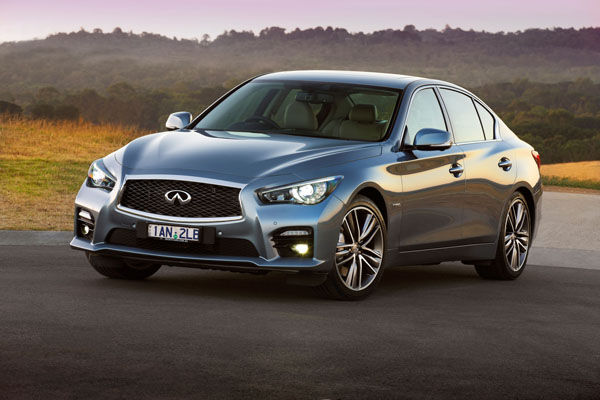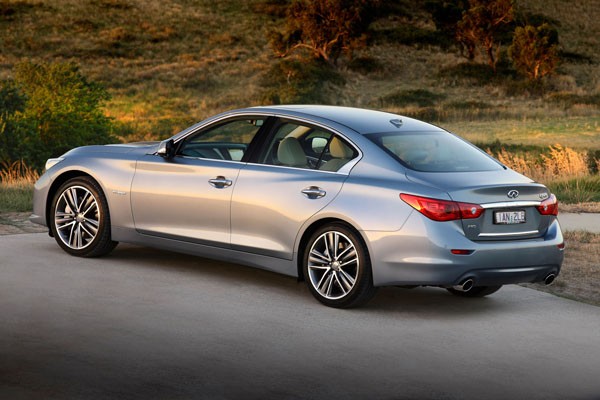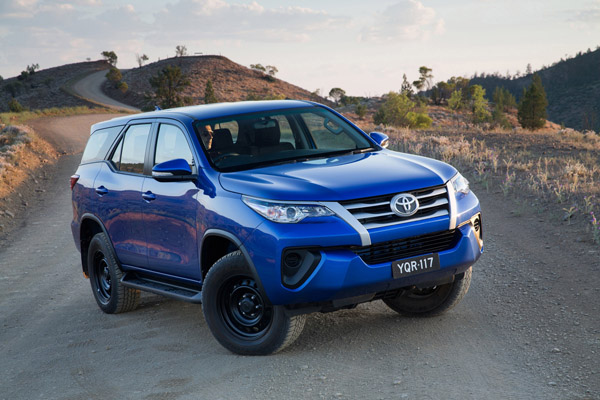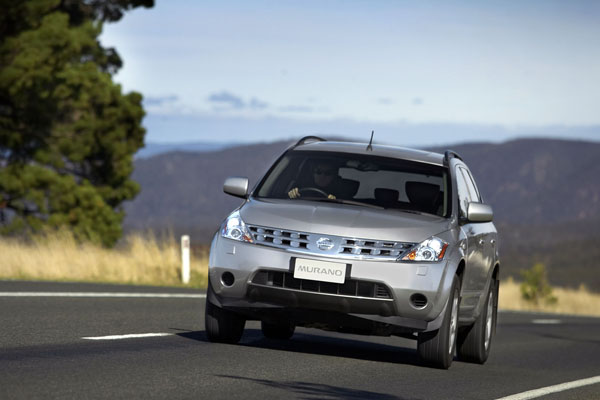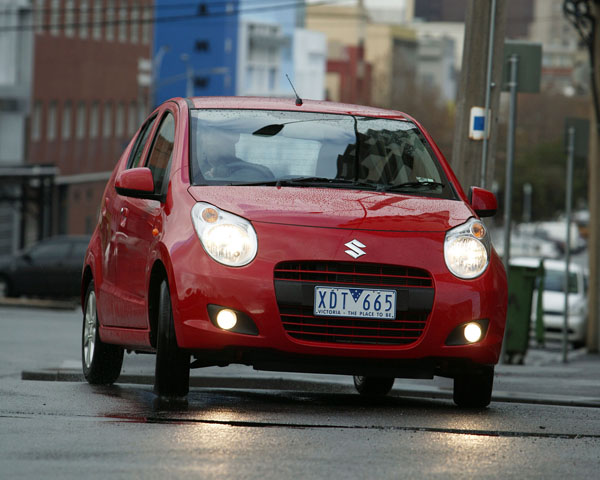Infiniti might have whopping great logos on the side of Daniel Ricciardo’s Red Bull racecar, but it’s still struggling in the dealerships. The company isn’t short of decent product – the QX70 is silly but extremely likeable – especially in V8 form; there’s the headline-grabbing QX30 on the way and the Q50 mid-size sedan.
The Infiniti Q50 was launched to great fanfare almost 18 months ago but they’re not a frequent sight on our roads, certainly not in the sales position its corporate masters might have liked or expected. The 2.0-litre turbo, seen as critical to sales, arrived late in 2014, but it still hasn’t fired. What’s going on?
VALUE
The new GT fires up the Q50 range at $50,900, way cheaper than either the BMW 320i or Mercedes C200. It shares the Mercedes’ engine, as it happens.
At this level, you get dual-zone climate control, cruise control with speed limiter, keyless entry and start, front and rear parking sensors with reversing camera, under car lighting, powered and heated front seats, electric steering column adjustment, sat-nav, park assist, and tyre pressure monitoring.
DESIGN
The Q50 was the first truly convincing Infiniti to come out of the company. It has a strong down-the-road presence, with lots of light catching curves and surfacing. The profile isn’t super-striking but clean, with a couple of design flourishes at the rear, the start of a family look that will appear in the Q70 large car.
Long and low-slung, Infiniti Q50 looks bigger than it is, and bigger than its rivals. This base model does suffer a bit from small-looking wheels, although at 17-inches they’re hardly tiny. It’s a design that likes bigger hoops.
Inside there are more curves and a just a couple of disappointments. The steering wheel is very clearly from a Nissan and that jars a bit, because the rest of the cabin feels and looks like it should.
Inside, It’s very tech-heavy, with a pair of stacked touch screens, one for sat-nav and car information, the lower for controlling apps and various cabin features. It looks good and it looks like it means business, taking on the sometimes empty-looking Germans.
There’s also some nice uses of materials, like brushed aluminium and the leather is soft and comfortable. Front occupants will be cosy but it’s not tight and two rear passengers will be likewise comfortable. A third rear occupant won’t appreciate the narrow cushion or transmission tunnel and there’s almost no storage in the back.
SAFETY
Six airbags, ABS, brake assist and brake force distribution, traction and stability control add up to five stars.
INFOTAINMENT
The six-speaker stereo is a fine example of a car stereo without being super-powerful or over-endowed with bass. It’s controlled by a mix of steering-wheel mounted buttons and the lower of the two screens. Other functions are controlled with a rotary dial on the console that lifts a lot of ideas from Mercedes’ Comand system. This is from the Mercedes book of ergonomics that can sometimes be a bit confusing.
You can choose to stream music from your phone, the internet or memory card, or fire up the DAB digital radio if AM/FM isn’t for you.
The lower screen is a high-res 8-inch panel and looks terrific. The graphics are mostly smooth and it works well. The upper seven-inch covers the sat-nav and rear-view camera. Sadly the two screens differ widely in quality which is jarring. The navigation’s map detail is a bit iffy into the bargain.
ENGINE / TRANSMISSION
The Q50 is powered by a 2.0-litre turbo four cylinder, developing 150 kW of power and 350 Nm of torque. With a seven speed automatic transmission driving the rear wheels, Infiniti claims 7.3 second from standstill to 100 km/h and a matching 7.3 litres per 100km on the combined cycle.
We got surprisingly close to the latter figure, bombing around town and a bit of highway driving to use 8.3 L/100km.
DRIVING
The immediate impression of the base model is that it feels better to drive than those further up the range with their whacky Direct Adaptive System. The GT has more familiar electro-hydraulic steering which feels good in the palms and is unusually communicative.
As you drive around more, though, you begin to feel the weight of the car, a weight that isn’t apparent in the excellent hybrid V6. The ride is for the most part good but can become a bit fidgety over the broken stuff.
When you pile on the corning speed – not something most owners will try – things start to come apart a bit. The car isn’t keen on changing direction and the overall chassis control starts to feel a little sloppy. It’ll be a much happier car if it didn’t have quite so much flab.
If you keep things tidy, it’s a really good place to be. Everything works well, it’s comfortable and apart from a little bit of tyre noise, quiet.
SUMMING UP 3.5/5
For a similarly-specced German, you’ll be paying a hell of a lot more than $50,900. You’ll also be using less fuel and going a little bit faster. Those are the bald facts. However, the Infiniti has a lot going for it. It has a ton of stuff in it, even in the entry level GT and it looks good.
What the Infiniti Q50 needs, though, is a bit more class to really take on the Germans. It’s a competent car and an impressive first effort. The problem is, people are buying SUVs and the Q50 just hasn’t captured the imagination. That task will fall to the dramatic-looking QX30.




